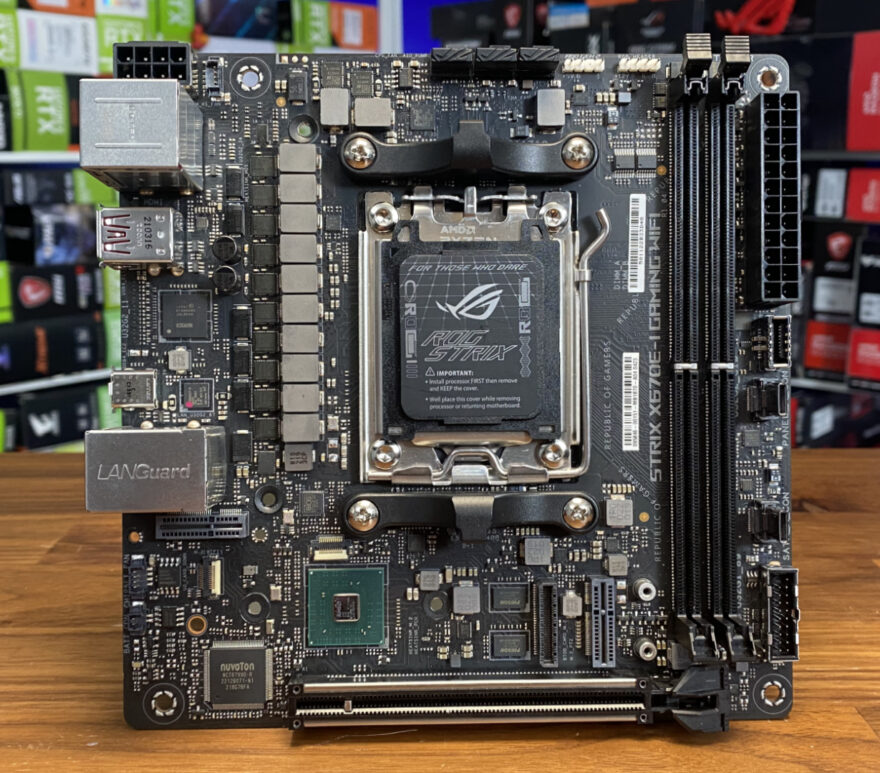ASUS ROG STRIX X670E-I Gaming WiFi Motherboard Review
A Closer Look
Without a doubt, this is a really great-looking motherboard. It’s unmistakably an ASUS board too, with ROG eye logos, the words ROG and STRIX splashed everywhere, and that dotted digital art design we see across much of their product range. It’s quite a shiny board too, with the larger heatsinks on the left and lower sections looking like oiled steel, and the way they’ve cut in the logos really plays on the whole light and shadow of the heatsinks.

Those heatsinks are pretty significant too, and the board is big and heavy for a mini-ITX, but as you can see, with all the layers peeled away, there’s some serious hardware here. There’s a 10 + 2 power solution rated for 110A per stage, with a bank of alloy chokes and durable capacitors that should provide reliable and stable performance on all Ryzen 7000 processors.

There are two DDR5 slots on the board, with support for 6400+ (OC) memory. They also have a small bit of reinforcement in the midpoint too, with that small metal strip.
The 8-pin CPU power connector is also wrapped in metal and fixed more solidly to the motherboard.

There are all the usual RGB headsets on the board too, but that’s pretty much to be expected these days.

The M.2 heatsink is quite tall, but it acts as both a heatsink for the M.2 drive and the motherboard chipset.

As you can see, there’s a small card below it, which is the ROG FPS-II Card, housing USB 2 headers, CMOS header, CPU over voltage header, and 2 SATA ports. There’s the M.2 above that with its own heatsink, and there are heatsinks on the motherboard at the bottom and on the top, giving you all kinds of goodies in one stack.

Behind the motherboard, you can see that very robust-looking CPU backplate, but also a further support plate behind the VRM providing a more stable mount and surface area for the heatsinks.
The rear I/O has a fair bit of ventilation built it, which is great, as it allows both the VRM heatsink and the M.2 heatsink to cool the system more efficiently. As you can see, there’s broad support for fast USB ports, there are two 40Gbps Type-C ports, and there’s even WiFi 6E and 2.5G LAN for ultra-fast networking.











